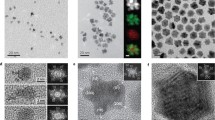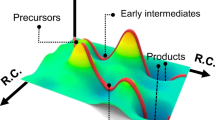Abstract
The nucleation and growth mechanism and polymorph-property correlations in the molecular cocrystal field are widely sought but currently remain unclear. Herein, a new wire-like morphology of phenazine (Phz)-chloranilic acid (H2ca) cocrystal (PHC) is demonstrated for the first time, and the self-assembly of Phz and H2ca is controlled to selectively prepare kinetically stable wires and thermodynamically stable plates. Specifically, low precursor concentration is beneficial for one-dimensional (1D) self-assembly along the [010] crystallographic direction, while only supersaturation can trigger 2D self-assembly along the [100] and [010] directions, respectively. This is understandable in terms of the (020) face showing the largest attachment energy (Eatt) and the (002) face possessing the smallest surface energy (Esurf). Moreover, anisotropic Raman spectra related to the mode symmetry and atomic displacements in two types of PHCs are revealed, and the same Raman-active vibrational bands of PHC wire and plate show different polarization responses, which is intrinsically ascribed to their different molecular orientations. Overall, this is the first case that morphologies of cocrystal are precisely tuned with comprehensive investigations of their anisotropic vibrational characteristics.
摘要
本文首次报道了Phz-H2ca铁电共晶的一种线状形貌, 并通过原子力显微镜、 透射电子显微镜、 X射线衍射、 紫外可见吸收光谱、 差示扫描量热法和固体核磁等实验手段证实. 共晶成核生长实验和Materials Studio软件模拟研究发现, (020)面具有最大的结合能, 在较低前驱体浓度下晶核沿[010]方向组装形成动力学稳定的线状形貌, (002)面具有最小的表面能和最大生长势垒, 即使在超饱和前驱体浓度下也只有(200)和(020)等晶面的生长势垒被突破, 使晶核沿[100]和[010]两个方向生长为热力学稳定的六边形片状形貌. 微区拉曼光谱实验研究表明, 两种Phz-H2ca共晶的拉曼峰具有截然不同的各向异性响应性, 归因于其不同的分子排布取向. 该研究工作实现了对分子共晶的控制制备, 阐明了其中的结构功能关系, 为共晶功能材料的进一步大规模应用提供了有力借鉴.
Similar content being viewed by others
References
Liu J, Zhang H, Dong H, et al. High mobility emissive organic semiconductor. Nat Commun, 2015, 6: 10032
Zhu M, Pan S, Wang Y, et al. Unravelling the correlation between charge mobility and cocrystallization in rod-rod block copolymers for high-performance field-effect transistors. Angew Chem Int Ed, 2018, 57: 8644–8648
Dou L, Zheng Y, Shen X, et al. Single-crystal linear polymers through visible light-triggered topochemical quantitative polymerization. Science, 2014, 343: 272–277
Li R, Hu W, Liu Y, et al. Micro- and nanocrystals of organic semiconductors. Acc Chem Res, 2010, 43: 529–540
Wang C, Dong H, Jiang L, et al. Organic semiconductor crystals. Chem Soc Rev, 2018, 47: 422–500
Zhang C, Yan Y, Zhao YS, et al. From molecular design and materials construction to organic nanophotonic devices. Acc Chem Res, 2014, 47: 3448–3458
Qin Z, Gao H, Liu J, et al. High-efficiency single-component organic light-emitting transistors. Adv Mater, 2019, 31: 1903175
Guo L, Gu X, Zhu X, et al. Recent advances in molecular spintronics: Multifunctional spintronic devices. Adv Mater, 2019, 31: 1805355
Ding S, Tian Y, Li Y, et al. Organic single-crystal spintronics: Magnetoresistance devices with high magnetic-field sensitivity. ACS Nano, 2019, 13: 9491–9497
Zhu W, Yi Y, Zhen Y, et al. Precisely tailoring the stoichiometric stacking of perylene-TCNQ co-crystals towards different nano and microstructures with varied optoelectronic performances. Small, 2015, 11: 2150–2156
Zhang H, Jiang L, Zhen Y, et al. Organic cocrystal photovoltaic behavior: A model system to study charge recombination of C60 and C70 at the molecular level. Adv Electron Mater, 2016, 2: 1500423
Aitipamula S, Banerjee R, Bansal AK, et al. Polymorphs, salts, and cocrystals: What’s in a name? Cryst Growth Des, 2012, 12: 2147–2152
Zhu W, Zhen Y, Dong H, et al. Organic cocrystal optoelectronic materials and devices. Prog Chem, 2014, 26: 1292–1306
Zhu W, Zheng R, Zhen Y, et al. Rational design of charge-transfer interactions in halogen-bonded co-crystals toward versatile solidstate optoelectronics. J Am Chem Soc, 2015, 137: 11038–11046
Zhang J, Tan J, Ma Z, et al. Fullerene/sulfur-bridged annulene cocrystals: Two-dimensional segregated heterojunctions with ambipolar transport properties and photoresponsivity. J Am Chem Soc, 2013, 135: 558–561
Horiuchi S, Ishii F, Kumai R, et al. Ferroelectricity near room temperature in co-crystals of nonpolar organic molecules. Nat Mater, 2005, 4: 163–166
Tayi AS, Kaeser A, Matsumoto M, et al. Supramolecular ferroelectrics. Nat Chem, 2015, 7: 281–294
Bolton O, Lee K, Kim HJ, et al. Activating efficient phosphorescence from purely organic materials by crystal design. Nat Chem, 2011, 3: 205–210
Bosshard C, Wong MS, Pan F, et al. Self-assembly of an acentric co-crystal of a highly hyperpolarizable merocyanine dye with optimized alignment for nonlinear optics. Adv Mater, 1997, 9: 554–557
Rao SM, Batra AK, Lal RB, et al. Mixed methyl-(2,4-dinitrophenyl)-aminopropanoate: 2-Methyl-4-nitroaniline crystal—A new nonlinear optical material. J Appl Phys, 1991, 70: 6674–6678
Zhu W, Dong H, Zhen Y, et al. Challenges of organic “cocrystals”. Sci China Mater, 2015, 58: 854–859
Wuest JD. Co-crystals give light a tune-up. Nat Chem, 2012, 4: 74–75
Aakeröy C. Is there any point in making co-crystals? Acta Crystlogr B Struct Sci Cryst Eng Mater, 2015, 71: 387–391
Li R, Zhang X, Dong H, et al. Gibbs-curie-wulfftheorem in organic materials: A case study on the relationship between surface energy and crystal growth. Adv Mater, 2016, 28: 1697–1702
Zhang J, Geng H, Virk TS, et al. Sulfur-bridged annulene-TCNQ co-crystal: A self-assembled “molecular level heterojunction” with air stable ambipolar charge transport behavior. Adv Mater, 2012, 24: 2603–2607
Briseno AL, Mannsfeld SCB, Ling MM, et al. Patterning organic single-crystal transistor arrays. Nature, 2006, 444: 913–917
Zhang C, Zou CL, Zhao Y, et al. Organic printed photonics: From microring lasers to integrated circuits. Sci Adv, 2015, 1: e1500257
Bernstein J, Davey RJ, Henck JO. Concomitant polymorphs. Angew Chem Int Ed, 1999, 38: 3440–3461
Hu P, Ma L, Tan KJ, et al. Solvent-dependent stoichiometry in perylene-7,7,8,8-tetracyanoquinodimethane charge transfer compound single crystals. Cryst Growth Des, 2014, 14: 6376–6382
Sun H, Wang M, Wei X, et al. Understanding charge-transfer interaction mode in cocrystals and solvates of 1-phenyl-3-(pyren-1-yl) prop-2-en-1-one and TCNQ. Cryst Growth Des, 2015, 15: 4032–4038
Bechgaard K, Kistenmacher TJ, Bloch AN, et al. The crystal and molecular structure of an organic conductor from 4,4′,5,5′-tetramethyl-A2,2′-bis-1,3-diselenole and 7,7,8,8-tetracyano-p-quinodimethane [TMTSF-TCNQ]. Acta Crystlogr B Struct Sci, 1977, 33: 417–422
Pope M. Electronic Processes in Organic Crystals and Polymers. 2nd Ed. Oxford: Oxford University Press, 1999
Liu G, Liu J, Liu Y, et al. Oriented single-crystal-to-single-crystal phase transition with dramatic changes in the dimensions of crystals. J Am Chem Soc, 2014, 136: 590–593
Boterashvili M, Lahav M, Shankar S, et al. On-surface solvent-free crystal-to-co-crystal conversion by non-covalent interactions. J Am Chem Soc, 2014, 136: 11926–11929
Horiuchi S, Kumai R, Tokura Y. Room-temperature ferroelectricity and gigantic dielectric susceptibility on a supramolecular architecture of phenazine and deuterated chloranilic acid. J Am Chem Soc, 2005, 127: 5010–5011
Amano M, Yamamura Y, Sumita M, et al. Calorimetric and dielectric study of organic ferroelectrics, phenazine-chloranilic acid, and its bromo analog. J Chem Phys, 2009, 130: 034503
Andersen EK. The crystal and molecular structure of hydroxyquinones and salts of hydroxyquinones. V. Hydronium nitranilate, nitranilic acid hexahydrate. Acta Cryst, 1967, 22: 204–208
Lee T, Chen HR, Lin HY, et al. Continuous co-crystallization as a separation technology: The study of 1:2 co-crystals of phenazinevanillin. Cryst Growth Des, 2012, 12: 5897–5907
Kang L, Fu H, Cao X, et al. Controlled morphogenesis of organic polyhedral nanocrystals from cubes, cubooctahedrons, to octahedrons by manipulating the growth kinetics. J Am Chem Soc, 2011, 133: 1895–1901
Winn D, Doherty MF. Modeling crystal shapes of organic materials grown from solution. AIChE J, 2000, 46: 1348–1367
Piaggi PM, Parrinello M. Predicting polymorphism in molecular crystals using orientational entropy. Proc Natl Acad Sci USA, 2018, 115: 10251–10256
Zhu W, Zhu L, Sun L, et al. Uncovering the intramolecular emission and tuning the nonlinear optical properties of organic materials by cocrystallization. Angew Chem Int Ed, 2016, 55: 14023–14027
Liu XY, Boek ES, Briels WJ, et al. Prediction of crystal growth morphology based on structural analysis of the solid-fluid interface. Nature, 1995, 374: 342–345
Durnick TJ, Wait Jr. SC. Vibrational spectra and assignments for phenazine. J Mol Spectr, 1972, 42: 211–226
Li WH, Li XY, Yu NT. Surface-enhanced hyper-Raman scattering and surface-enhanced Raman scattering studies of electroreduction of phenazine on silver electrode. Chem Phys Lett, 2000, 327: 153–161
Pawlukojc A, Bator G, Sobczyk L, et al. Inelastic neutron scattering, Raman, infrared and DFT theoretical studies on chloranilic acid. J Phys Org Chem, 2003, 16: 709–714
Fujioka J, Horiuchi S, Kida N, et al. Anisotropic polarization π-molecular skeleton coupled dynamics in proton-displacive organic ferroelectrics. Phys Rev B, 2009, 80: 125134
Kim H, Ko H, Kim SM, et al. Polarization-dependent anisotropic Raman response of CVD-grown vertically stacked MoS2 layers. J Raman Spectrosc, 2020, 51: 774–780
Venuti E, Bilotti I, Della Valle RG, et al. Polarized Raman spectra of a rubrene single crystal. J Phys Chem C, 2008, 112: 17416–17422
Troisi A. Prediction of the absolute charge mobility of molecular semiconductors: The case of rubrene. Adv Mater, 2007, 19: 2000–2004
Fu DW, Cai HL, Liu Y, et al. Diisopropylammonium bromide is a high-temperature molecular ferroelectric crystal. Science, 2013, 339: 425–428
Acknowledgements
This work was supported by the National Natural Science Foundation of China (51303185, 21021091, 51033006, 51222306, 51003107, 61201105, 3591027043, 91222203, 91233205, 21473222 and 21773040), the Ministry of Science and Technology of China (2011CB808400, 2011CB932300, 2013CB933403, 2013CB933500 and 2014CB643600), and the Chinese Academy of Sciences (Y42D0A12D1 and Y42D0412D1).
Author information
Authors and Affiliations
Contributions
Author contributions Hu W directed the project; Wang Y and Huang C performed the PFM experiments; Zhu W performed the other experiments and Materials Studio software simulations; Zhu L performed the DFT computations; Zhen Y, Dong H, Wei Z and Guo D contributed to the general discussion. All the authors contributed to the manuscript and supporting information writing.
Corresponding author
Ethics declarations
Conflict of interest> The authors declare that they have no conflict of interest.
Additional information
Weigang Zhu obtained his BE degree from the University of Electronic Science and Technology of China (UESTC) (2011) and PhD degree from the Institute of Chemistry, Chinese Academy of Sciences (ICCAS) under the supervision of Professor Wenping Hu (2016). He then carried out postdoctoral research training in Professor Tobin J. Marks’s group at Northwestern University (2019). His research interests include one-dimensional hybrid nanomaterials, molecular co-crystals, and organic photovoltaics.
Wenping Hu is currently a professor at the Department of Chemistry, Tianjin University, and the Founder & Director of Tianjin Key Laboratory of Molecular Optoelectronic Sciences. He obtained his PhD degree from ICCAS in 1999. He then joined Osaka University as a research fellow of Japan Society for the Promotion of Sciences, and Stuttgart University as an Alexander von Humboldt fellow. In 2003, he worked for Nippon Telephone and Telegraph, and then returned to ICCAS and was promoted as full professor. His research focuses on molecular electronics.
Supporting Information (SI)
Rights and permissions
About this article
Cite this article
Zhu, W., Wang, Y., Huang, C. et al. Polymorph and anisotropic Raman spectroscopy of Phz-H2ca cocrystals. Sci. China Mater. 64, 169–178 (2021). https://doi.org/10.1007/s40843-020-1372-6
Received:
Accepted:
Published:
Issue Date:
DOI: https://doi.org/10.1007/s40843-020-1372-6




